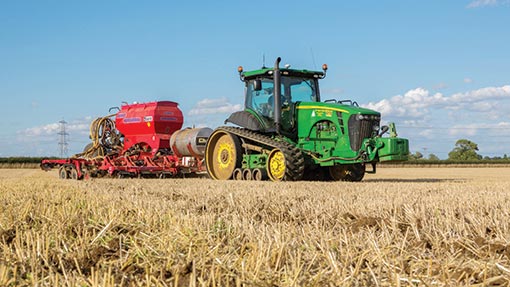Delay oilseed rape drilling to reduce pest and disease threat

Oilseed rape growers should avoid drilling early to help mitigate pest and disease problems, warns Adas plant specialist Pete Berry.
An early harvest has tempted many growers into drilling quickly after cereal crops, but early-sown oilseed rape could be at risk, with high numbers of flea beetles being reported and perfect conditions for virus transmission.
“If ever there was a year to hold back and not rush into OSR drilling immediately after the cereal harvest, 2014 is it,” he says
Dr Berry says plants emerging quickly will be vulnerable to turnip yellow mosaic virus transmitted by the growing populations of aphids resulting from the warm weather, as well as being at risk from flea beetles for a longer period of time.
The loss of neonicotinoids has also sparked early drilling, with growers hurrying to get the crop off to a good start, but Dr Berry says holding back could pay off.
He urges growers to leave a stale seed-bed for a few weeks to help tackle volunteers and weeds while reducing the threat from pests.
“There’ll still be plenty of warmth and strong crop growth will help plants tolerate flea beetle damage much better.”
Later sowing and at slightly lower seed rate will also reduce the risk of lodging later on in the season, explains to Dr Berry.
According to Mike Mann of oilseed rape breeder DSV, a number of growers say they are aiming to start drilling this week.
“There’s an obvious temptation to get seed in the ground as soon as possible this year so plants will be as strong as possible as early as possible. But there is a danger you’ll just be creating food for pests.
“We would normally say any time after mid-August is fine, but this year we would be very wary of drilling sooner than late August.”
Mr Mann says choosing a variety with good vigour, getting seed-bed preparation right and paying attention to plant population will be critical to get the crop off to the best possible start.
“We would advise choosing a strongly establishing hybrid and using the next couple of weeks to create a good seed-bed rather than rushing into drilling.
“Good cultivations help the tap root develop its optimum potential, resulting in strong plants, and this is the best protection against pests and diseases possible. Good drainage is important, too.”
Seed rates should still be geared to achieving about 25-35 plants/sq m for good overwintering, he says.
“Crops with 25 plants/sq m yield better than crops sown at higher densities. This holds true even if the plant holds just three to four true leaves through the winter.
“In many ways you’re always better off planting oilseed rape later, but many people are very worried this year because of the loss of neonicotinoids.”
ProCam technical director Tudor Dawkins agrees, saying using a high-vigour variety and holding back drilling for a week or two is the right approach this year to avoid pest problems and overdevelopment of canopies later.
“The next few weeks should be used to plan rotations and create the right seed-beds, rather than drilling. Good-quality seed-beds are key to getting the crop away quickly and if you’re rejigging fields this year, make sure you’re not drilling next year’s oilseed rape up against last year’s to avoid migration of flea beetles from one field to another,” says Dr Dawkins.

